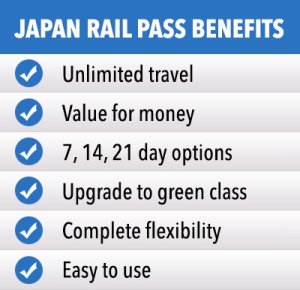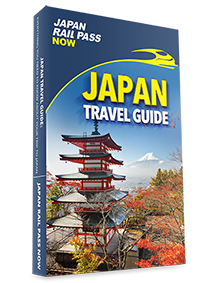Nagasaki Travel Guide

 Overview
Overview
The capital of Nagasaki Prefecture, located on the island of Kyushu, Nagasaki is a port city that has held a major role in Japan’s trade relations with various countries for several centuries now. It was one of the few ports that were kept open during the country’s period of isolation. Today, it is mostly remembered for being one of two Japanese cities devastated by an atomic bomb during World War II.
 When To Go
When To Go
- Nagasaki experiences mild, dry and sunny winters (December – February), with temperatures ranging between 7 and 13 degrees.
- In the summer (June – August), especially in June and July, it experiences a lot of rain and tends to be warm and humid. Temperatures peak in August, when they can spike up to the high 30s.
- During the spring (March – May) and autumn seasons (September – November), daily average temperatures are in the low 20s, so viewing cherry blossoms and autumn foliage, and various other outdoor activities, are quite popular.

Nagasaki Peace Monument

Nagasaki Lantern Festival
 Things To See
Things To See
Visit the Nagasaki Peace Park
Built to commemorate the atomic bombing of the city during World War II, the Nagasaki Peace Park is home to several memorials and monuments that remember the destruction and victims of the tragedy. Its most notable attractions are the large Peace Statue, the Hypocenter Park (where a marked area of the epicentre of the explosion can be found) and the Nagasaki Atomic Bomb Museum.
Go to Gunkanjima
A 50-minute boat ride from Nagasaki Port, Gunkanjima is a tiny, abandoned island (150 metres wide and 480 metres long) that used to be a coal mine up until 1974. A guided tour to the island is available daily, and lets guests see the deteriorated remains of buildings and other facilities.
Stroll around the Glover Garden
Home to mansions of Western merchants who settled in Japan in the late 1800s, Glover Garden is an open air exhibition of houses and residences that feature Western architecture with a touch of Japanese influence. It has a spacious garden that offers panoramic views of the city and surroundings.
Check out the city’s religious buildings and structures
Nagasaki is home to the Koshi-byo, a Confucius Shrine built in 1893 by the city’s Chinese residents; the Kofukuji, a Buddhist temple built in 1620 at the foot of a hill; and the Oura Tenshudo, a Catholic Church constructed in 1864 and the oldest surviving Christian place of worship in Japan.
Attend the Nagasaki Kunchi
The Nagasaki Kunchi Festival is an annual event that is held 7-9 October in Nagasaki. Observed by the city for about four centuries now, it is a unique festival that fuses Dutch and Chinese influences throughout Nagasaki’s history. It is highlighted by large floats and dragon dance performances.

Confucius Shrine

Glover garden
 Where To Explore
Where To Explore
- Chinatown – The oldest Chinatown in Japan, Nagasaki Chinatown, or Shinchi Chinatown, was founded in the 17th century by Chinese merchants. Today, its many restaurants and eateries offer a wide selection of noodle dishes, particularly sara udon and champon, and attract local and foreign tourists all year round.
- Dejima – Built in 1636 for the Portuguese people living in Nagasaki, Dejima is an historic area that features remnants of old walls, gates, residences and warehouses.
- Mount Inasa – Standing at 333 metres high, Mount Inasa is located close to central Nagasaki and offers stunning views of the city at night. Its summit and observatory can be reached by car, bus or ropeway.
 Getting Around
Getting Around
Nagasaki has four tram lines that link all of its main sightseeing attractions. A ride costs 120 yen, and a one-day pass is also available for 500 yen.
Many of Nagasaki’s top attractions are located close to each other, so walking is also a good and healthy way of exploring the city.












